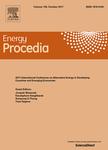版权所有:内蒙古大学图书馆 技术提供:维普资讯• 智图
内蒙古自治区呼和浩特市赛罕区大学西街235号 邮编: 010021

作者机构:State Key Joint Laboratory of Environment Simulation and Pollution Control School of Environment Beijing Normal University Beijing 100875 China Beijing Engineering Research Center for Watershed Environmental Restoration & Integrated Ecological Regulation Beijing 100875 China Department of Science and Technology Parthenope University of Naples Centro Direzionale Isola C4 80143 Naples Italy
出 版 物:《Energy Procedia》
年 卷 期:2016年第88卷
页 面:218-223页
主 题:Urban metabolism Ecological Wisdom System dynamics Environmental impacts
摘 要:In the last two decades, remarkable progress in the promotion and implementation in China has occurred and generated a huge change of land use, energy and other resources demand, as well as environmental problems. It is therefore of paramount importance to explore the driving forces and the consequences of such a trend, as far as environmental integrity and resource availability are concerned. Special focus must be placed to possible changes in driving forces, in order to understand to what extent such a trend is continuous and irreversible or, instead, if sustainable metabolic processes in cities are likely to slow down as a consequence of the expected decline of available energy and material resources. Previous studies have already recognized the importance of the energy and material basis in support to urbanization trends and expressed concerns about the environmental consequences resulted from urbanization. What is missing is an integrated approach capable of establishing a bridge across the three legs of urban sustainability: (i) economic viability; (ii) social desirability; and (iii) ecological compatibility. This paper describes the development of a forecasting model, named the thermodynamic-based urban dynamic model, capable of accurately simulating the observed resource consumption, economic growth, and environmental impact of Dalian from 2000 to 2050. This model differs from previous urban dynamic models by monitoring the negative effects to human well-being and ecosystem integrity in the developing urban systems. Statistical information and calibration were also considered in this dynamic accounting. The results showed that the production and consumption processes in Dalian are heavily relied on non-renewable resources. Although the economic structure of Dalian was generally optimized, Dalian continued to face enormous resource and environmental pressures caused by the rapid economic growth. This study advances the temporal dynamic principles through inte